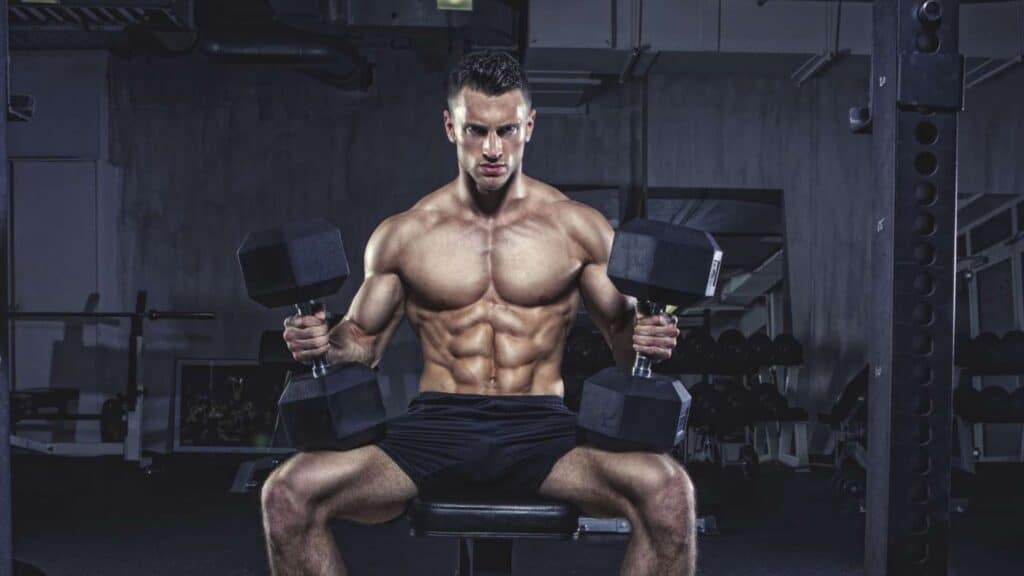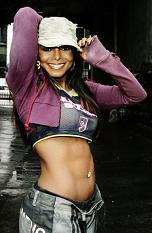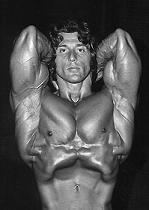
With the prevalence of six-pack abs in the media by everyone from Hugh Jackman and Matthew McConaughey, to Janet Jackson and Beyonce Knowles, society as of late treasures that elusive flat-defined stomach look, and they must know the secrets of the best abdominal exercises, right? We can thank high resolution for our cultural transition from portly praise to abdominal admiration.
After all, before Hollywood got huge in the 1900s, as a culture we appreciated a little meat on our bones because it represented comfort, success, and good health. Now that we get to feast our eyes daily on tough-guy actors, beautiful actresses, rock stars, and supermodels, we’ve come full circle into the Washboard Era.
Quick Links:
10 Best Ab Exercises Part 1
10 Best Abdominal Exercises Part 2
10 Best Abs Exercises Part 3
How We Use Our Core
Also, be aware that there are other great uses for strong abs other than showing off your flat stomach. Powerlifters, Strongmen, Olympic athletes, sport-specific athletes, mixed martial artists, and even novice athletes and recreational weightlifters have every reason to work their abs hard.

Rock-solid, super-strong abs are responsible for keeping your spine and organs healthy and safe, and for moving large amounts of weight in various directions and angles.
Building a solid foundation is the #1 most important rule for people just getting into weightlifting, or for experienced lifters who have plateaued due to a lack of ab conditioning. Intense resistance-based ab training, squats, deadlifts, overhead presses, and bench presses are the exercises that will help you reach this goal most efficiently.
The Never-Ending Core Journey
I constantly get questions and comments about getting a six-pack. My reply is usually to go to the local convenience store and pick up a 6er of Bud Light in bottles, but that is often not the answer they are looking for.
Recently I received an inquiry from a Project Swole reader named Fred that went something like this:
“I follow a clean diet and I’ve been working on my abs several days a week for the last three years, but I don’t have a six pack. Can you give me some advice on breaking my plateau?”

Poor Fred has been working at this for 3 solid years and has yet to obtain the coveted washboard abs. This gives you an idea as to just how long folks will work at this lifestyle, despite countless failures, to achieve the condition they want.
More often than not, the problem is not in their dedication, it’s in their diet and training. They think they can do endless sets of crunches and hanging leg raises, and eventually, those abs will start rippling. In many cases it’s not what they are doing, it’s what they are not doing that’s the problem.
The Immortal Myth of Spot Reduction
The #1 cause of a soft midsection is a result of a myth that just won’t die: if you exercise a certain muscle group you will be able to tone that spot on your body. This is FALSE, FALSE, FALSE!
I repeat: just because you exercise a muscle, does not mean you will begin to show cuts or definition in that area.
Your muscles in the target area will get bigger, stronger, faster, and better conditioned, but fat loss will NOT occur in that area unless it is simultaneously occurring everywhere else in your body. The only way you can do crunches and wake up one day to six-pack abs is if your body fat is already under 8%.

The truth you need to know is that flat six-pack abs are difficult to get. To succeed in this quest, you need the right combination of exercise, diet, and genetics. There, I said it.
I have had a 4 pack on several occasions throughout my life. A six-pack is just not attainable for me unless I get under that 8% body fat mark, and even then I don’t have great lower abdominal genetics. The four-pack is maintainable by me year-round, although it’s slightly harder to stay lean during the winter.
What does all of this mean for you?
It means that a flat belly is achievable for you, just as it is for anyone.
It means that your body might not physiologically be right for displaying six-pack abs, but you should be able to show off some abdominal definition if your body fat is low enough.
It means that you need to follow a strict diet to drop enough body fat from your whole body, that your abs become visible through a wall of various abdominal tissues.
It means that you might not be able to drop that much body fat if your lifestyle doesn’t allow it, or if your body won’t function properly at a low body fat percentage.
It also means that you need a wide variety of effective exercises to shape your abdominals from all angles.
What You Need for Flat Abs
The basics:
- good genes
- discipline
- commitment
- determination
- intensity
- time
- and knowledge

Most of the basics you can either control or manipulate and by now you are already guessing at what you can do to get flat abs regardless of your physiology:
- A healthy diet, on which you burn more calories than you consume.
- Cardiovascular exercise. I recommend high-intensity interval training (HIIT).
- Full body strength training 3 times per week with a focus on abdominal training.
- A list of the 10 most effective abdominal exercises known to man.
I can’t tell you what will work best for you because I don’t know anything about you. However, I can tell you what works best for me and my clients, and let you take the knowledge and run with it.
Let’s start by examining the anatomy and physiology of the abs so we know how they work.
Anatomy of the Abdominals
Located on the front and sides of the lower half of the torso, the rectus abdominus, transverse abdominus, and the external and internal obliques comprise the abdominal muscle group. These muscles attach to the pelvis and originate alongside the rib cage.
When talking about the six-pack you are referring to the rectus abdominus, whose strips of connective tissue give the impression of deep cuts between the 6 most-visible heads of the muscle.
The deepest core muscle is called the transverse abdominus. This muscle is underneath the rest of the core muscles; it wraps around the entire abdominal area. A strong transverse abdominus is useful for developing strong intra-abdominal pressure when lifting.
Finally, the muscles that allow us to move our core in a variety of angles are called the obliques. There are both internal and external obliques, which run diagonally across the body.
Functions of the Abdominals

The rectus abdominus is responsible for bringing the rib cage closer to the pelvis, or flexing the spine, as when performing a crunch. By alternately stretching the spine, the rectus abdominus brings the pelvis closer to the rib cage, as when performing leg raises properly by tilting the hips towards the chest at the top of the movement.
Your transverse abdominus is responsible for keeping your guts in your body. It acts as a natural weight belt and is important for trunk and core stability. By constantly keeping your abs pulled in tight throughout the day, you are training your transverse abdominus with an isometric contraction. An extreme example is a Frank Zane vacuum pose.
Tip: By consciously holding a vacuum all day long every day, you are training your midsection to stay flat at all times.
The internal and external obliques rotate the torso and stabilize your trunk during various angled movements.
The Top 10 Best Abdominal Exercises
We are going to put all that diet talk on the shelf for a moment to focus only on abdominal exercises.
You already know you need to drop to low levels of body fat to display your abs. So let’s assume you are already there or are currently dieting with a vengeance.
Now you need to know which exercises you should perform to thicken, shape, and sculpt those abs. Or if that’s not your bag, you need to know which exercises will help you the most with your powerlifting, strongman training, Olympic lifting, or sports performance.
Exercises like squats, deadlifts, and overhead pressing will be important for developing your core. Exposing the abdominals to heavyweight while squatting is extremely beneficial for shocking the abs into new growth.
For now, we are going to forget about all that stuff and examine exactly which abdominal exercises will give you the most bang for your buck.
This list is a compilation of exercises that meet the following classifications:
- exercises that are highly praised and used often by good personal trainers
- exercises used by martial artists for abdominal strength and conditioning
- exercises used by bodybuilders who have thick, well-defined abs
- exercises that provide real results based on my 14 years of experience
- exercises from a study in which participants were tested using electromyography (EMG) equipment to monitor muscle activity
The EMG Study
In the ACE-commissioned study referenced above, conducted by Peter Francis, Ph.D., and Jennifer Davis, M.A., at the San Diego State University Biomechanics Lab, the upper and lower rectus abdominus muscles were tested along with the external obliques.
Activity in the rectus femoris was also measured and recorded because high levels of activity in the hip flexors indicate an exercise that might commonly be performed incorrectly or requires the body to recruit secondary muscles in addition to the abdominal and obliques.
An example of this would be the very common hanging leg raise, in which most people simply use their hip flexors to raise and lower their legs, barely recruiting the abdominals at all. Aside from wasting time thinking you are working your abs, this can lead to muscle imbalance, impingement, discomfort, and injury.
To Be Continued…
Now that you have read the basis for our top 10 best ab exercises, take a moment and re-read some diet articles to help you shed that extra body fat. Part 2 will be published later this week and will contain the first 5 of my top 10 best ab exercises.
Quick Links: 10 Best Ab Exercises Part 2
Tags: abdominals, abs, core, top 10
